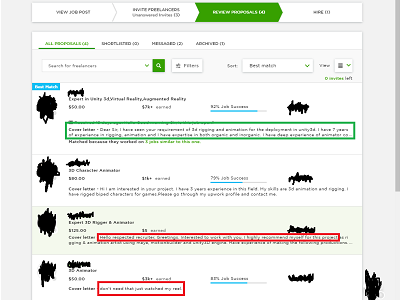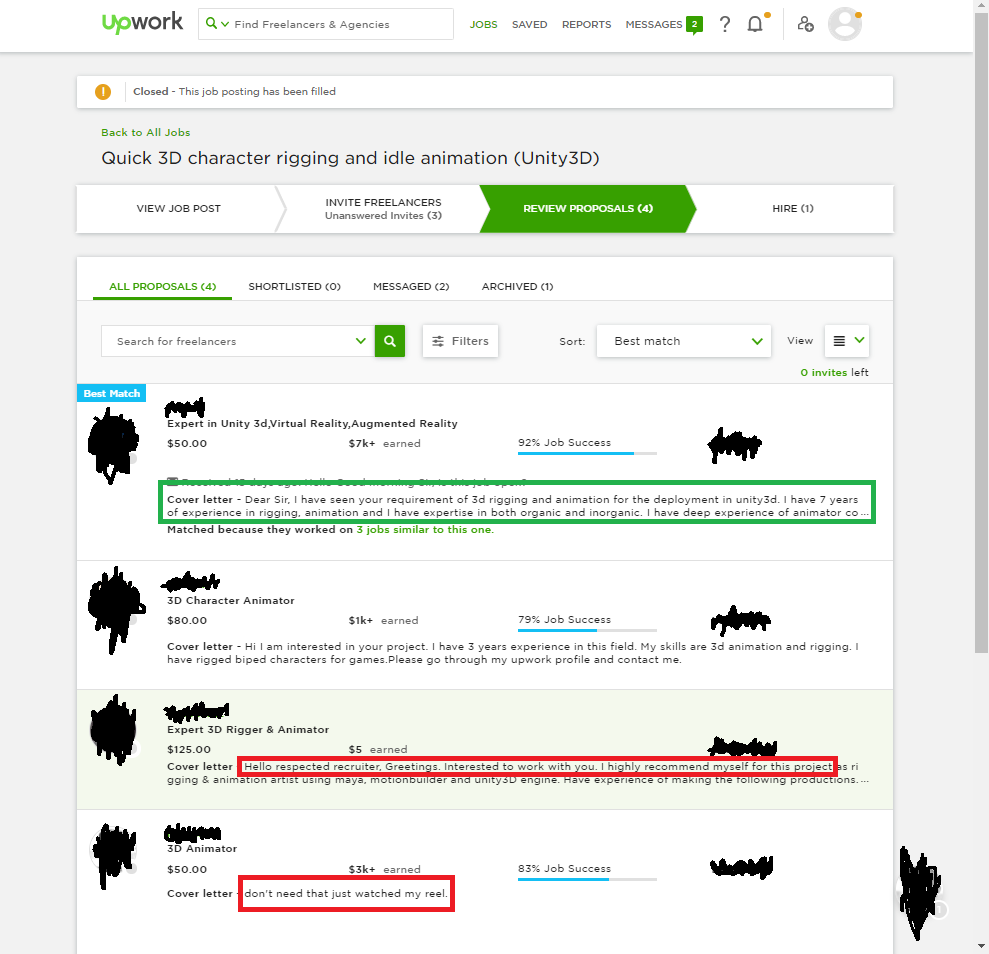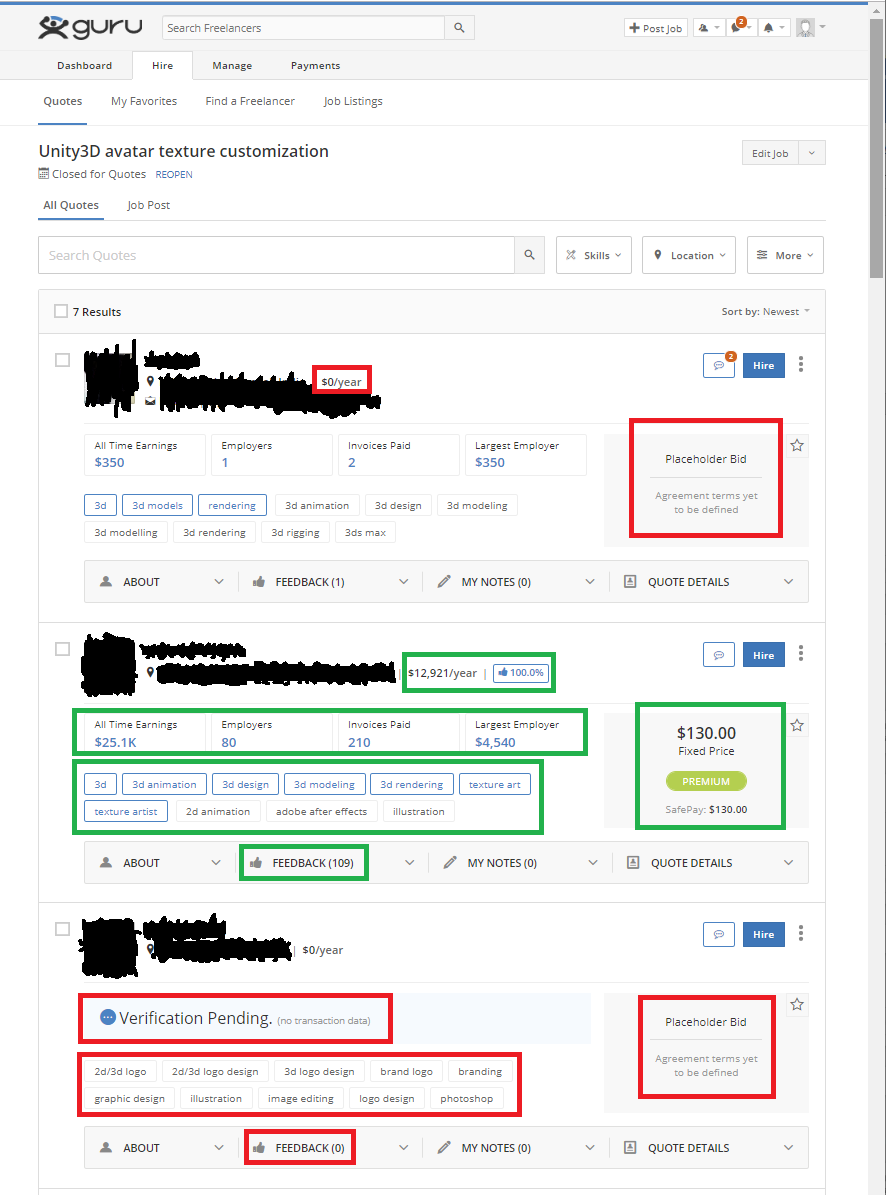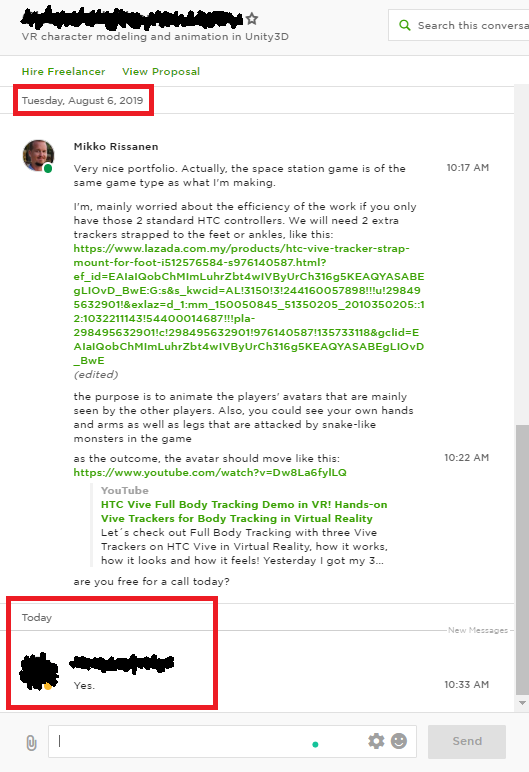
- by Dr. Mike
Over the years I’ve made a couple of mistakes, I’ve experimented with different styles, and I’ve seen other freelancers do things differently when communicating with clients online. Most often the initial communications are done by text. Normally, on any freelance site, there is first a proposal or application that attracts the client to talk to you, after which is all up to your own communication skills to take things further and get a gig started. (The overall process is described here.)
Code of Conduct for Online Freelancers, Part 1 gives you dos and don’ts for communicating with clients online with real-world examples based on my 5 years of being a freelancer and almost as many years of being a client on a number of freelance sites. Part 2 will discuss the business aspects of the code of conduct when doing freelance online and gives tips for conflict resolution.
Why I had to write this down and share it with you? Because too many starting freelancers get this wrong! I can only speculate the reasons, but the impact of unsuitable communications with the first clients may kill your promising freelance career before it really begins.
The first lines your client sees
Actually, what your client will see depends very much on the freelance site. Typically, it is a short bullet list with just the beginning of your message. Here’s an example of how it looks on Upwork.

List of quotations on Upwork. Make sure you know what the first message your client sees is.
The first freelancer on top of the list is doing a decent job in introducing herself and stating the relevant skills that match the job perfectly.
The second last is somehow recommending himself for the job, which could not result in anything else than a slight grin on the client’s face. I couldn’t get why he calls me “recruiter” either.
The last one is a classic. With his $3,000 earnings and below 100% Job Success Score this freelancer seems to think he doesn’t need to go through the same process as everyone else. You might afford to look slightly arrogant when you have two more zeros at the end of the earnings but until then…
Other sites, like Guru, don’t give you a chance to show anything except stats. The message only appears after the client clicks the tab open on the list. Therefore, your chances as a starting freelancer are limited. At least all account verification steps should be taken to ensure your profile appears serious.

Guru’s quotation list has nothing but stats and prices.
Here, the third freelancer has not verified the account and will therefore not be contacted by anyone, ever. The first one has earned a few hundred bucks last year. Also, the keywords don’t match with the gig, which means there was no real reason for even applying for it.
Only the second profile looks credible, and it is not only about the stats. Please note how it is also the only one able to put a price tag for the job. If the site doesn’t let you write a proposal that shows on the first page the client sees, you have to focus on the rest. The ability to put at least a tentative price tag is crucial, as you have no other opportunity.
Let’s list the don’ts first:
- Don’t skip writing a professional intro in the cover letter or start of the application no matter how good you think you are.
- Don’t refer to anything that is not visible on the list, such as anything in your profile.
- Don’t include external links (that are not even allowed on many sites).
- Don’t use a logo as your profile photo. People associate your writing with a face immediately which makes your proposal more memorable than any logo.
- Don’t copy-paste the usual templates like “I have read project description carefully and am really interested in your project because I have done similar one before.” All of what that sentence means is already assumed by experienced clients, don’t waste their time.
- Obviously, every freelancer should have read the project description carefully. You’re no different.
- Instead of just mentioning having done some abstract “similar one,” mention exactly what that similar one is.
The dos:
- State the most relevant reason why you apply for the gig upfront. Write it in a way that fits the limited space in the list. If that fails, the rest might not even get looked at!
- If you see the name of the client, use it. It is always better for the client to get a personalized message than a copy-pasted one.
- Make sure the photo looks positive. Show that smile. 🙂
- Make sure the keywords match!
- Double-check your spelling to ensure you give a professional impression.
- Put a price tag on the work, even if it is a tentative one. In that case, mention it at the end of the proposal.
The proposal
Parts 1-3 of the article series Have You Proposed Right? show you how to survive the proposal writing process as a whole. There are only a couple of things more to highlight regarding the communication style for the process of writing the proposal and the first couple of messages that usually follow it.
Dos:
- Keep it short and to the point, explain which portfolio item is similar to the client’s job.
- Make it error-free.
- Stay humble, don’t assume anything.
- Show curiosity to the client’s job and person.
- Read the guides on how to use the site.
- Read the user agreement of the site. (Yes, this is crazy stuff, right!? I made a big mistake on one of the sites as a client because of not knowing what I signed up for: I got a warning on my first transaction attempt!)
- Stay positive, even if some replies come late from the client’s side. There can be any number of reasons.
- Ask for a phone call (or Skype, Zoom, Whereby, or whatever other media). Give a voice to your profile photo to make a better connection.
- If the client seems not to know how the site works, give pointers to the official guides.
- State your time zone to help your client to determine how to collaborate with you best.
Don’ts:
- Avoid making mistakes in pricing, type of contract, or other mundane things that are enforced by the site. Learn how it works first.
- Don’t get provoked into unprofessional behavior even if the client goes that way. Some start screaming when they realize their own management capabilities failed in getting the job started on time. Staying silent is usually the best thing.
- Don’t include all the links to your previous results. There’s nothing more frustrating for a client to see than twenty-five links to apps you have on App Store. Instead, include only the ones that are similar to the client’s job. For the rest, you can just give a number. Save the client’s time.
The first call
Surviving the first call with your client should not be that difficult. Yet, many things can go horribly wrong even if you nail the process all the way to the point where the client is interested in having a quick call with you.
Dos:
- Go for a video call as often as possible. Hearing your voice is good, seeing your face is even better. Make sure you have a positive face when the video stream is up. (This also avoids the client from suspecting a fake account.)
- Show genuine interest in the client’s project. Ask questions that relate to the job.
- Solve the problem the client has on a high level and tell the client how you would create an effective solution.
- Explain how the project is going to go.
- Paint a beautiful picture of future collaboration if you feel this could be something for the long term. Yet, be sure to mention “but let’s get this thing right first” to make sure the present gig starts on the right track.
- Agree on action points, i.e. what happens next. This can usually be the client sending you more material you should go through or you refine your initial quotation or something like that.
Don’ts:
- Don’t be late. Ever. Some clients make you wait for them, just suck it up if you really want them.
- Don’t look like you just woke up. There are few things worse than sleepy hair on a first call.
- Don’t create unrealistic expectations. You might be tempted to promise “if the others say it takes two weeks, I’ll do it in one!” in case you have uncertainty about the delivery.
- Don’t ask questions that don’t relate to the job, unless the client starts lengthy chitchat. (Some people require it, actually.)
- Don’t get stuck with technical problems. Have a plan B and C, all the way up to using a conventional phone call if nothing else works.
- Don’t include anything funny or distracting in the background of a video call.
The first call is when you make your first impression as a person in your client’s mind. Make sure it is a positive one. (Also, you can still be wearing nothing but your underpants, if even those, as long as it doesn’t show to your client. And don’t let the client know if you’re calling from the toilet.)
Common bottlenecks in communication
Speed is of the essence. When you do freelance for real, you are expected to reply within 24h. Practically, it means weekends too. Only hobbyists reply late. Think of a typical client who gets two dozen proposals for a good project. Being the 25th one has almost no chance of getting viewed no matter how good your proposal is. Your client’s mind is already on the other ones.
If you’re away, it is OK to send a message about it by just dropping a short note about when you’re back in business. Of course, that might increase the chance of missing the gig, but it is always better to give some reply quickly rather than trying to get back to the topic a week later.
The same goes with communication after the first few messages. Reply quickly. It is possible to miss a couple of messages here and there sometimes. If you realize you missed something, don’t get back to the client. The only impact of late replies is perceived unprofessionalism in the client’s eyes. In case you miss a message, it is better not to reply … so that your professional image is still in the client’s head the next time! Heavy freelance site users might come back to you even if you don’t expect it months later. It’s better not to destroy the good impression with replies that come way too late.

A reply almost 2 months too late means that the job has been already done by someone else… and that your client will think of you as a mere hobbyist. You might not get a second chance.
One thing that might be interesting to know is that there are clients who list not only the good freelancers but the bad ones also. You don’t want to end up on anyone’s blacklist by sending a message very late or wasting the client’s time in any other way.
Another bottleneck might be getting into an endless discussion about the exact price with a $10 difference. Having a good client base is always more important than getting one gig to pay a tiny bit more.
Code of conduct for online freelancers: The conclusion
Hopefully the above gave you enough information to nail the initial communication with a new client on freelance sites. In case of any unclear issues, feel free to connect and discuss them.
Part 2 will walk you through typical cases where it might not be clear how to treat your client when the project has already started.
All the best with freelancing online or otherwise.
Dr. Mike
Mikko J. Rissanen, Ph.D., a.k.a. Dr. Mike, is an accomplished solopreneur living in a tropical paradise, inventing cool tech and coding from his beach office... and eating coconuts all day, every day. He has been running his one-man show in Penang, Malaysia, since 2014 until he moved the business to the United States as I2 Network in 2021. He is one of the most highly paid freelancers on Upwork and he has been supporting hundreds of starting freelancers since 2017. Follow his latest tips on LinkedIn or seek his personal guidance as a CoachLancer member!